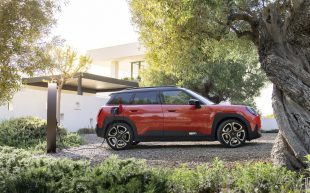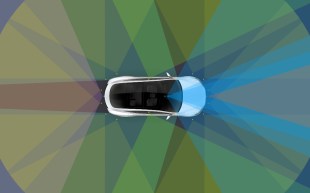McLaren P1 designer Frank Stephenson on a mission to reinvent the motorcycle
Could be powered by hydrogen
In a career that has spanned more than 30 years, designer Frank Stephenson can put his name to a number of landmark cars. The original BMW X5 SUV and first of the BMW-era Minis were his, as was the rejuvenated Fiat 500. At the other end of the spectrum, the Ferrari F430 and Maserati MC12 supercars were penned by Stephenson, while McLaren’s products from the MP4-12C (latterly known simply as the 12C) up to the 720S are credited to him.
Stephenson left McLaren in 2017 to set up the Frank Stephenson Design consultancy to assist with industrial design projects, and now the company has revealed that it’s looking at reinventing the motorcycle.



In a presentation held at the Barber Vintage Motorsport Museum in Birmingham, Alabama in America, Stephenson said: “Our goal is to challenge the industry’s lack of innovation and present a motorcycle that embodies the future.
“At Frank Stephenson Design, we see a tremendous opportunity to disrupt the current landscape and introduce a motorcycle that incorporates advanced technology, radical design elements and unparalleled functionality.
“As a motorbike enthusiast, it’s fair to say this is also a personal passion project of mine.”

The Barber Motorsport Museum was chosen for the announcement and Q&A session because of its collection of more than 1,400 motorcycles that chart the history of two-wheeled motorised transport.
Thevast collection features all sorts of motorcycles, including classic pioneers, racing bikes, off-road models, mass-market scooters and top-end superbikes.
But as Stephenson pointed out in his presentation, the design of the motorcycle has remained stagnant for almost a century, with little in the way of radical design departure.
This first look at the design consultancy’s new project (top) suggests a radical interpretation of the genre. There are ‘hubless’ wheels front and rear, a long rear swingarm designed for stability, a short tail piece and a curved fairing with enclosed grips that closely hugs the front wheel and running gear.
While it was shown in a typical low-slung sports bike configuration, Stephenson stated that the bike is designed to offer an adjustable seat height and handlebar layout for different terrain and riders, while active aerodynamics and customisable controls are also planned.
As well as offering a radical design and highly configurable riding position, the new concept is pioneering new propulsion technology. Rather than going along the car route by ditching petrol power and replacing the combustion engine with a battery-electric drivetrain, the concept is claimed to be fitted with a hydrogen fuel cell system that helps the bike to “embody the future of this dynamic industry”.
Stephenson’s ambition is that this new concept will “revolutionise the motorcycle industry and captivate the imagination of enthusiasts worldwide”, and he hopes that some of its innovations will make mainstream production by the year 2030.
Constant refining and development of the final concept is ongoing at Frank Stephenson Design’s headquarters in London, but the company is hopeful of revealing the final concept motorcycle in the second half of 2023.
Related articles
- If you were interested in the first motorbike designed by Frank Stephenson, you may want to read that McLaren F1 designer Gordon Murray is to develop a lightweight electric SUV
- Watch a ‘colossally stupid’ motorcycle rider caught doing 180mph…
- Did you know that Frank Stephenson really doesn’t like the Tesla Cybertruck?
Latest articles
- Omoda 5 prototype review: Bargain family SUV is solid first effort for new Chinese brand
- Dacia Duster 2024 review: Rugged, affordable SUV modernised with electrification and quite the glow up
- Audi A3 Sportback 2024 review: Softly, softly, catchy premium hatchback buyer
- New electric-only Mini Aceman fills gap between Mini Cooper hatch and Countryman SUV
- Tesla driver arrested on homicide charges after killing motorcyclist while using Autopilot
- Porsche Macan 2024 review: Sporty compact SUV goes electric, but is it still the class leader for handling?
- F1 2024 calendar and race reports: What time the next grand prix starts and what happened in the previous rounds
- Aston Martin DBX SUV gets the interior — and touchscreen — it always deserved
- Nissan unveils bold look for updated Qashqai, still made in UK














